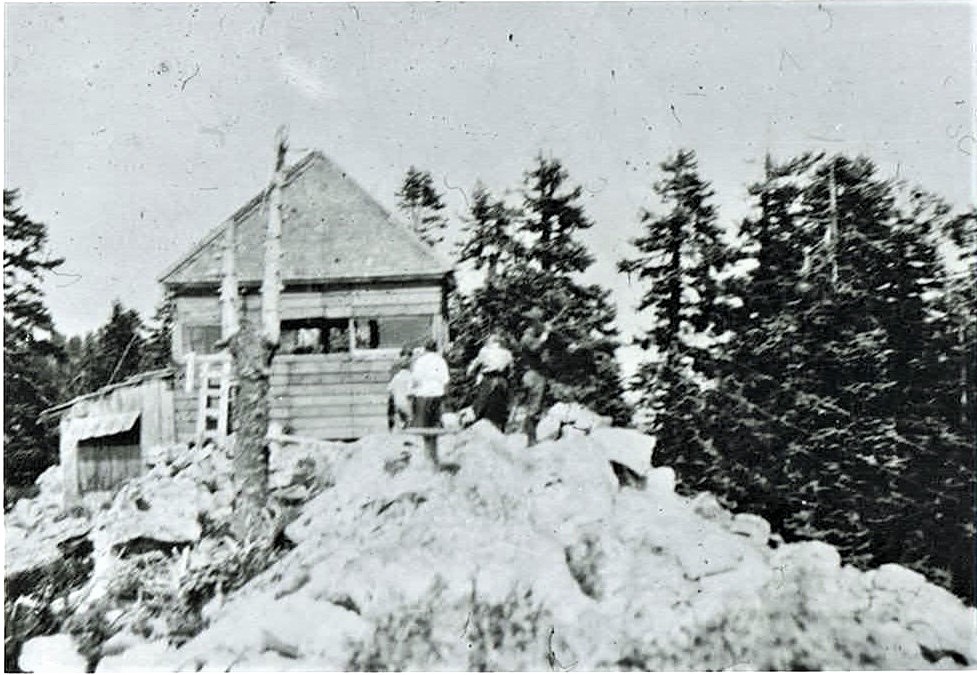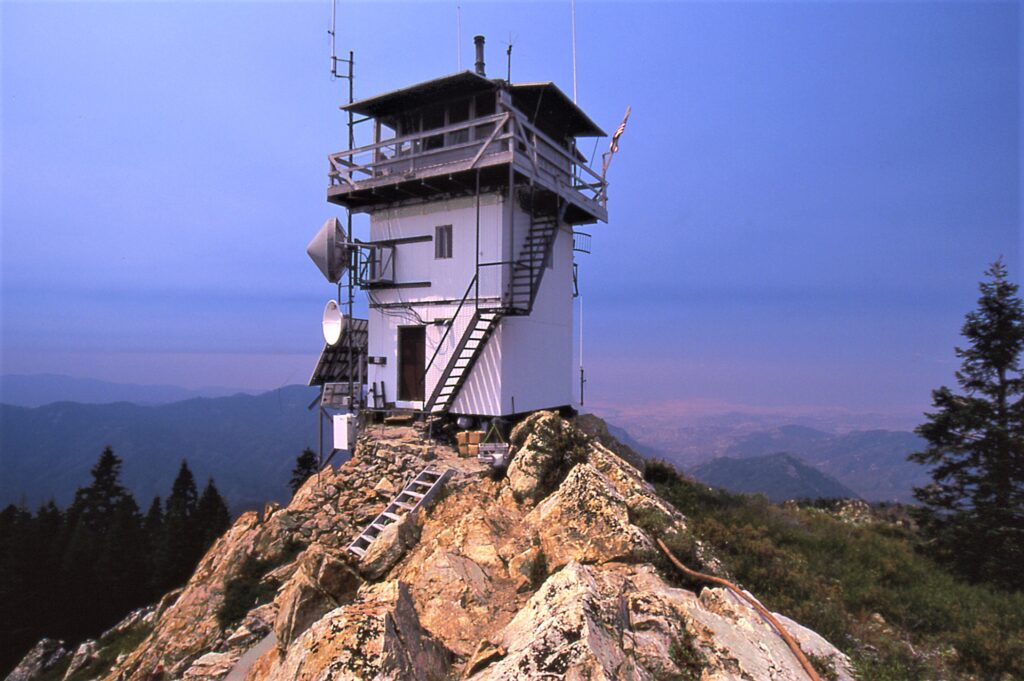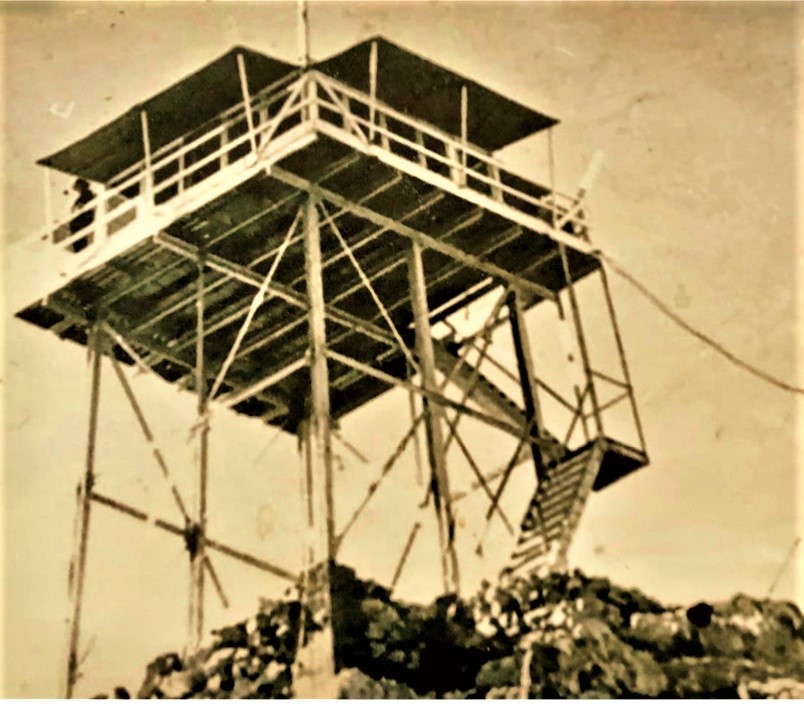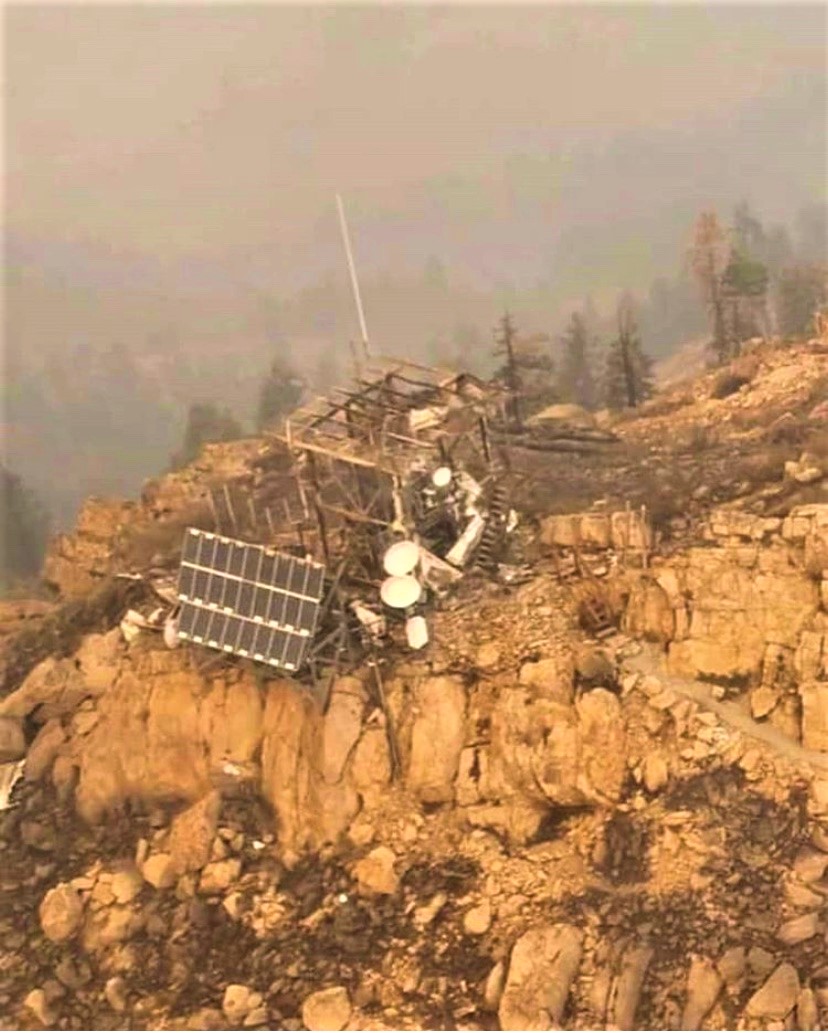
The SQF complex fire destroyed the historic Jordan Peak Fire Lookout in September 2020.
By John Elliott for 3RNews, 8 October 2020.

One of only four staffed lookouts left within Sequoia National Forest, the Jordan Peak Lookout was destroyed in a wind-driven firestorm on Monday, September 14, 2020. It is reportedly the oldest lookout site in the Sequoia National Forest.
The Early Years
The site was believed to have been used as a lookout in the 1890s prior to the land being designated as national forest. It was located on a granite peak at an elevation of 9,038 feet, a few miles north of Camp Nelson and northeast of Springville. Written accounts exist from 1899 where one observer reported that he could see a dozen fires burning the summer before from the promontory.
There is evidence that the site was officially used as a lookout observation post as early as 1914. In those days, a smoke chaser would ride on horseback to the peak and spot smoke and fires with binoculars then plot the locations on a map using a compass.

The Jordan Peak Lookout location shows up on the oversize 1916 Sequoia National Forest map printed in two sections — a north and a south sheet. It was the first definitive topo map of the Sequoia National Forest boundaries and it showed the location of a lookout at Jordan Peak, but was erroneously drawn in the wrong section.
The name Jordan came from the area’s storied association with John Jordan. Jordan did the route finding and laid out the Jordan Trail in 1861. The trail shortened the route to the Coso Silver Mines near Owens Lake on the Sierra’s east side.
The trail led up Yokohl Creek across the south end of Blue Ridge, up Bear Creek to near Balch Park, then onto Hossack Meadow on the south side of Jordan Peak. Thence on to Kern Flat on the Kern River crossing the main summit of the Sierra via Jordan Hot Springs and Monache Meadows. Portions are still in use today and because of the Jordan Trail, the Union Army had improved access to the Coso district during the Civil War ensuring that the valuable silver would not find it’s way into the Confederate treasury.
The effect on the Jordan Peak area was that many 19th century settlers found their way into the rugged high country around the trail both north and south, a number of whom stayed. It follows that the Jordan Peak Lookout developed a special relationship with those mountain communities that developed around Camp Nelson.
That relationship with the homes and cabins in the area was a special one as a trek up to the summit of Jordan Peak afforded the best views of the Tule River drainage. It was a must for any visitor to the area, and local residents visited the site often to view each changing season of the Tule River country. It was a sightseeing destination, along with the local giant sequoia groves when cabin guests came calling.
The CCCs modernize: An observation post becomes a fire lookout

As the years of the 20th century passed, the lookout assigned to Jordan Peak kept watch on a growing number of second homes and summer cabins that were developed in the area. The earliest construction of a 20-foot steel tower and L-4 cab with catwalk was completed in 1934 with the help of the CCCs (Roosevelt’s Civilian Conservation Corps). An extensive remodeling of the lookout structure was completed in 1970 when the existing tower and cab were enclosed with metal siding.
What resulted was a three-story, more utilitarian lookout. The top floor was the observation platform — communications center and work room — the middle floor was the sleeping quarters and at groud level was the kitchen and dining area.
Mark Thornton, an architectural historian who evaluated historic structures for the U.S. Forest Service, dismissed some of the historical significance owing to the 1970 remodeling, so Jordan Peak Lookout was determined not eligible for the National Register of Historic Places. However, the significance of the role that the lookout played in the local community and historical associations with the Jordan Trail, a case could certainly have been made today for a NR listing.
The SQF Complex fire ended any possibility of that ever happening. The lookout’s destruction by this epic wildfire underscores the need to protect cultural resources in advance of these intensifying fire seasons.
In 1994, the Jordan Peak Lookout was officially listed among 506 active and inactive fire lookouts in California by the Forest Fire Lookout Association. The lookout’s destruction on September 14 will be indelibly etched in the hearts and minds of all who knew and visited this special place.

